下载rancher服务镜像 [root@k8s-node01 ~]# docker pull rancher/rancher:stable 查看镜像 [root@k8s-node01 ~]# docker images REPOSITORY TAG IMAGE ID CREATED SIZE rancher/rancher stable fb0772b142fe 13 days ago 856MB .........
启动rancher容器 [root@k8s-node01 ~]# docker run -d -v /tmp/rancher:/tmp/rancher --restart=unless-stopped -p 80:80 -p 443:443 rancher/rancher:stable 查看rancher容器 [root@k8s-node01 ~]# docker ps|grep rancher 2c2b36cb138b rancher/rancher:stable "entrypoint.sh" 3 hours ago Up 3 hours 0.0.0.0:80->80/tcp, 0.0.0.0:443->443/tcp lucid_robinson
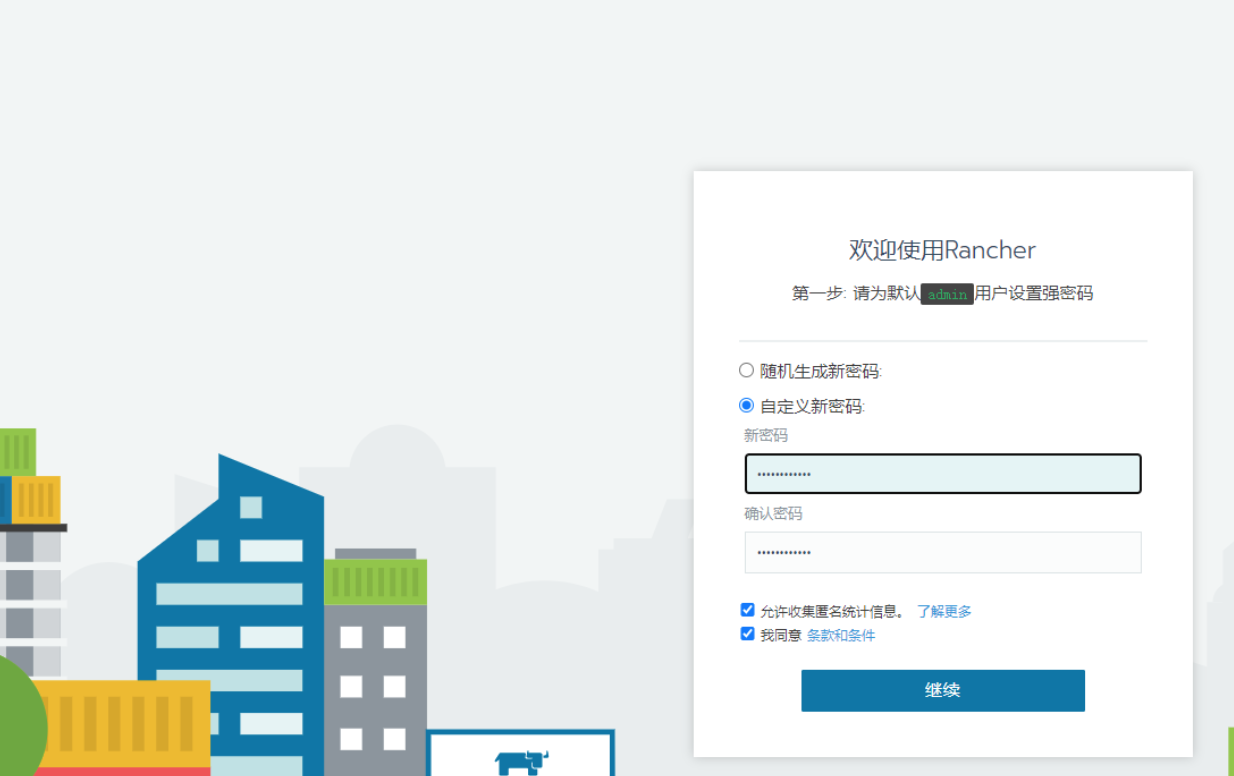
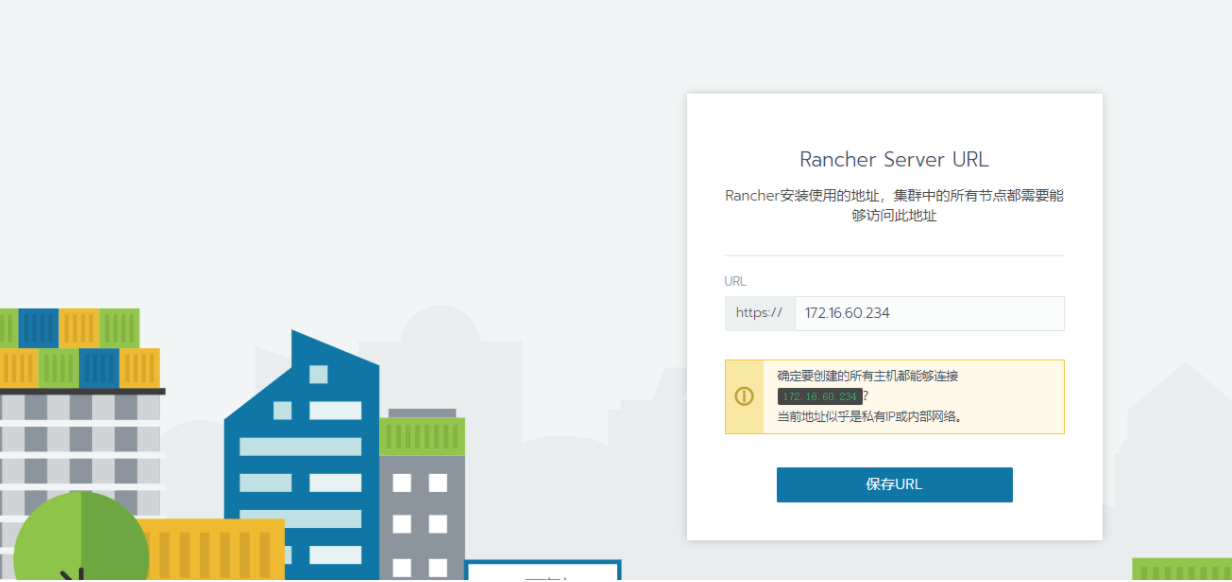

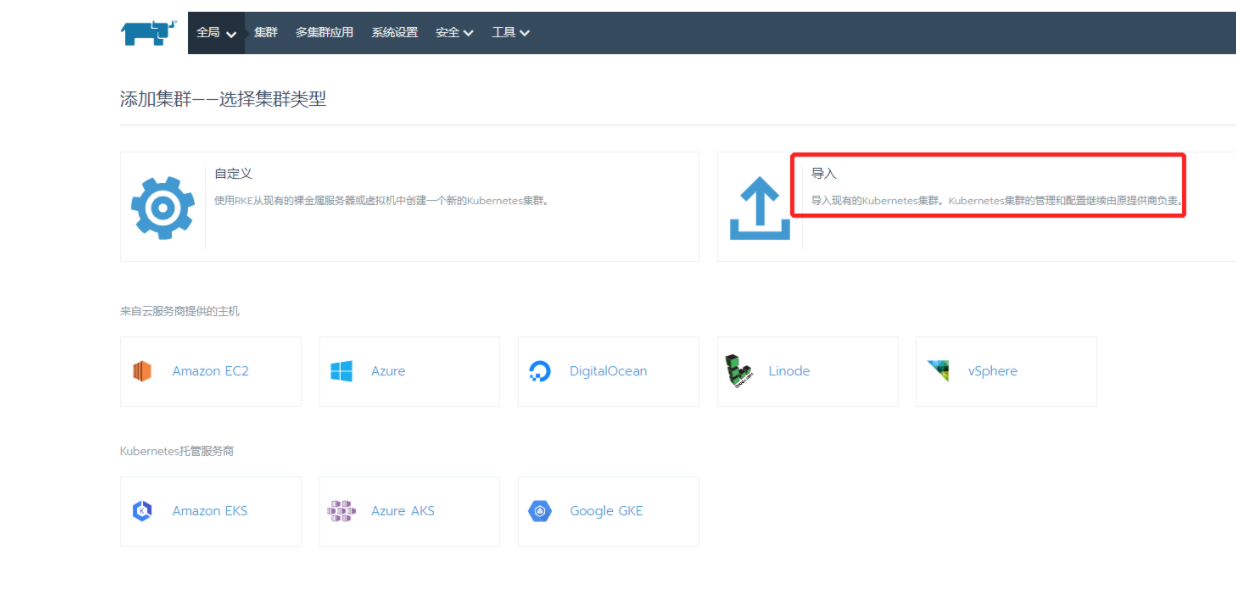
2) 给自己导入的集群起一个名称。比如这里我导入的k8s集群名称设置为"kuvin-test-cluster"
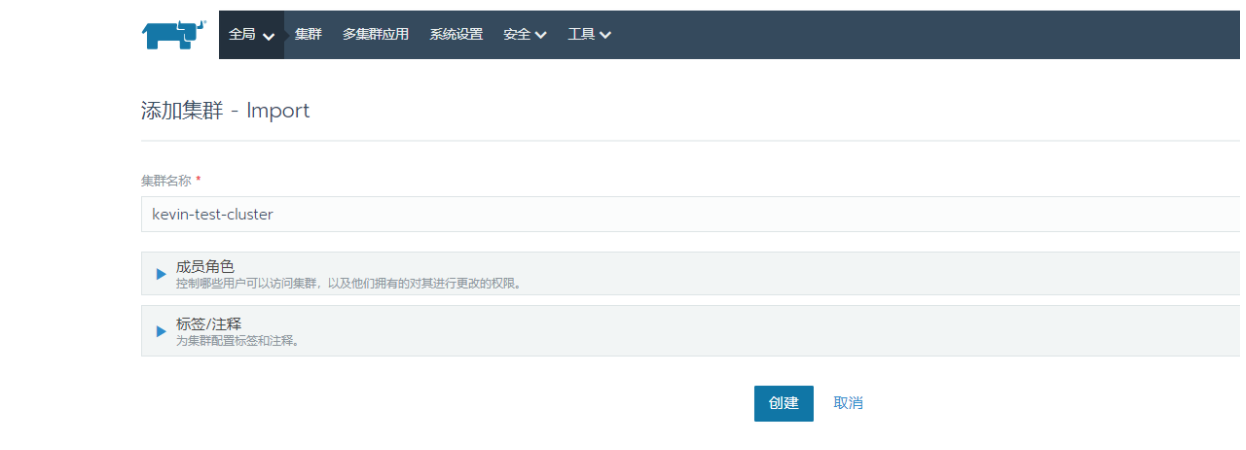
3)按照下面的指向,执行第一步骤和第三步骤(因为我这里二进制部署的k8s集群是有证书,所以跳过第二步骤,直接执行第三步骤)
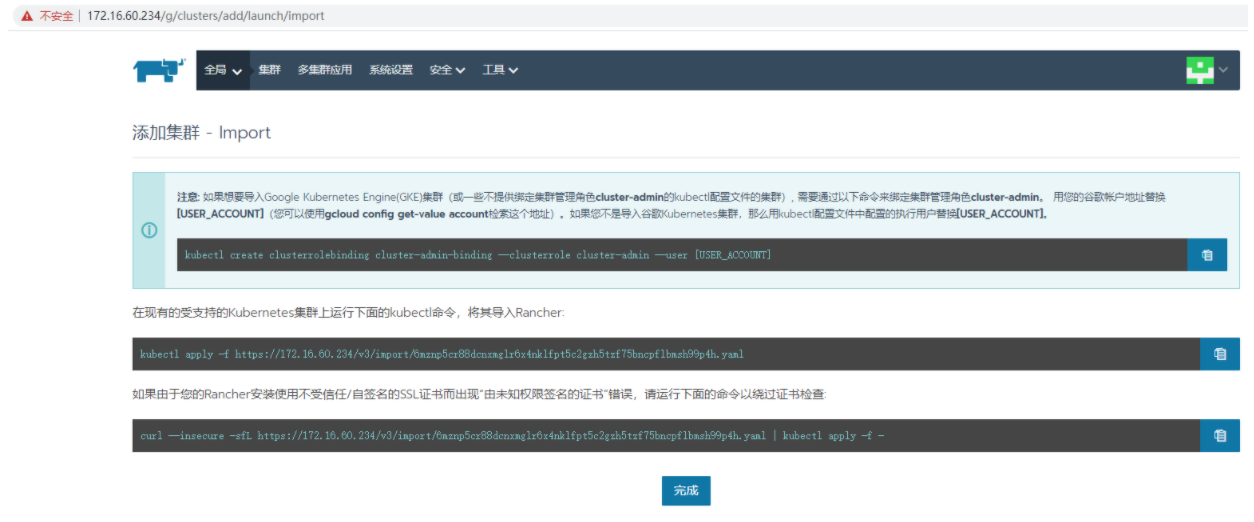
先查看node节点kubelet配置中的USER_ACCOUNT,默认是default-auth

[root@k8s-master01 work]# kubectl create clusterrolebinding cluster-admin-binding --clusterrole cluster-admin --user default-auth clusterrolebinding.rbac.authorization.k8s.io/cluster-admin-binding created
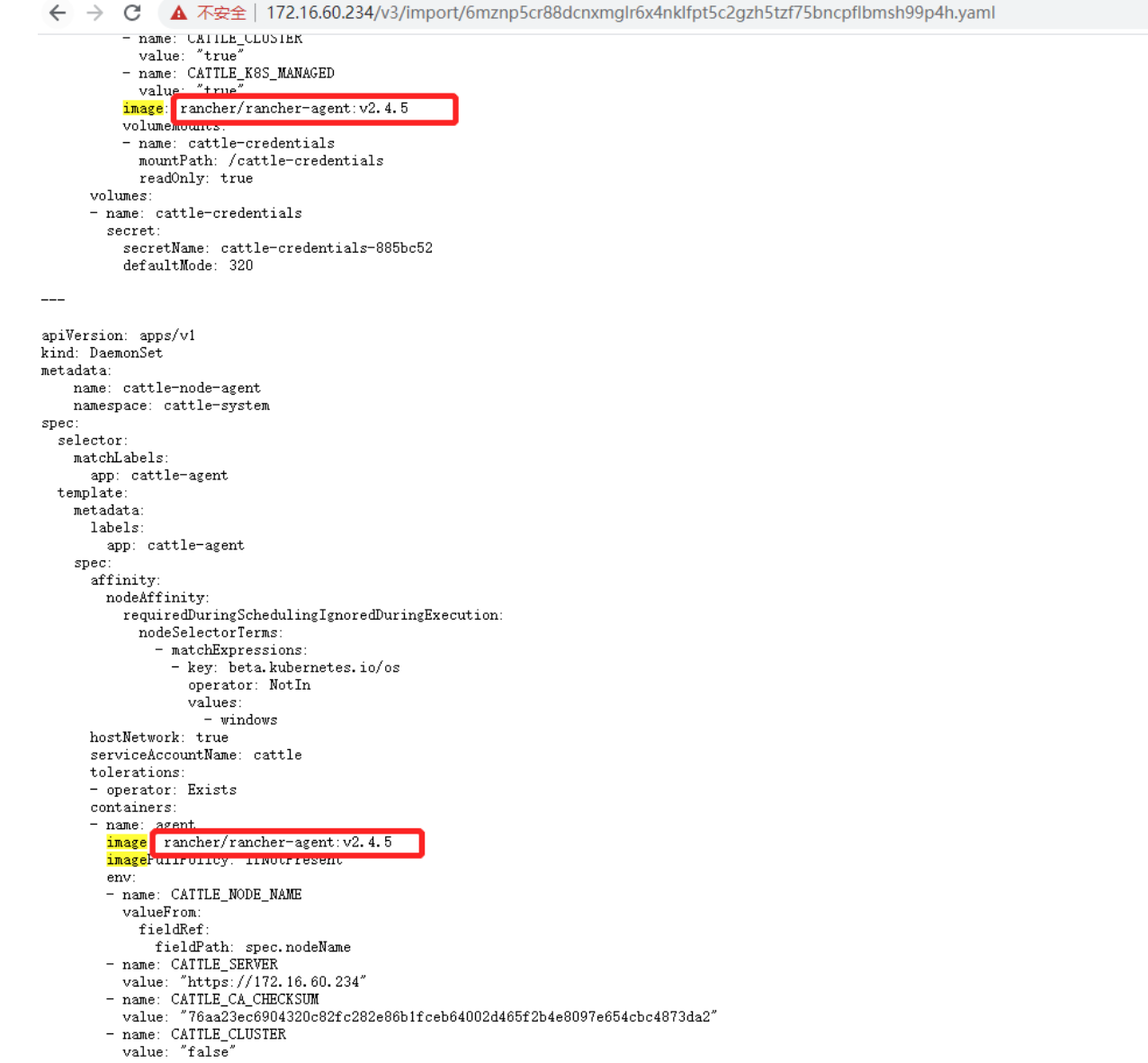
查出来image镜像后,提前在所有的node节点节点上下载这个rancher/rancher-agent:v2.4.5镜像
[root@k8s-node01 ~]# docker pull rancher/rancher-agent:v2.4.5 [root@k8s-node01 ~]# docker images REPOSITORY TAG IMAGE ID CREATED SIZE rancher/rancher-agent v2.4.5 2e6c7ac4e072 13 days ago 294MB .......
[root@k8s-master01 work]# curl --insecure -sfL https://172.16.60.234/v3/import/qx7972dgq5876dlvtx66hmb55l49w57tvpr8v58ldwvlk75bb44msn.yaml | kubectl apply -f - clusterrole.rbac.authorization.k8s.io/proxy-clusterrole-kubeapiserver created clusterrolebinding.rbac.authorization.k8s.io/proxy-role-binding-kubernetes-master created namespace/cattle-system created serviceaccount/cattle created clusterrolebinding.rbac.authorization.k8s.io/cattle-admin-binding created secret/cattle-credentials-ad2b8cf created clusterrole.rbac.authorization.k8s.io/cattle-admin created deployment.apps/cattle-cluster-agent created daemonset.apps/cattle-node-agent created
检查会发现k8s中多了一个cattle-system的命名空间 [root@k8s-master01 work]# kubectl get ns NAME STATUS AGE cattle-system Active 18m default Active 3d19h kube-node-lease Active 3d19h kube-public Active 3d19h kube-system Active 3d19h cattle-system的命名空间下创建了cattle-cluster-agent和cattle-node-agent的pod [root@k8s-master01 work]# kubectl get pods -n cattle-system NAME READY STATUS RESTARTS AGE cattle-cluster-agent-87944bb89-9l8vn 1/1 Running 0 18m cattle-node-agent-24vnp 1/1 Running 0 18m cattle-node-agent-86hdx 1/1 Running 0 18m cattle-node-agent-qz59v 1/1 Running 0 18m [root@k8s-master01 work]# kubectl get deployment -n cattle-system NAME READY UP-TO-DATE AVAILABLE AGE cattle-cluster-agent 1/1 1 1 19m [root@k8s-master01 work]# kubectl get daemonset -n cattle-system NAME DESIRED CURRENT READY UP-TO-DATE AVAILABLE NODE SELECTOR AGE cattle-node-agent 3 3 3 3 3 <none> 19m
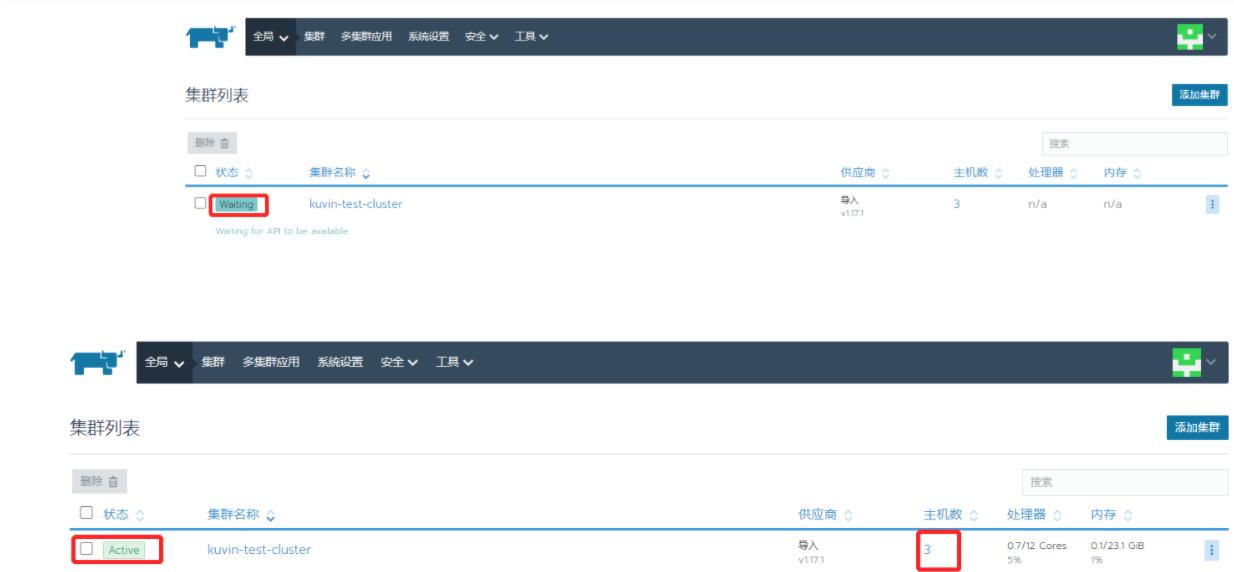

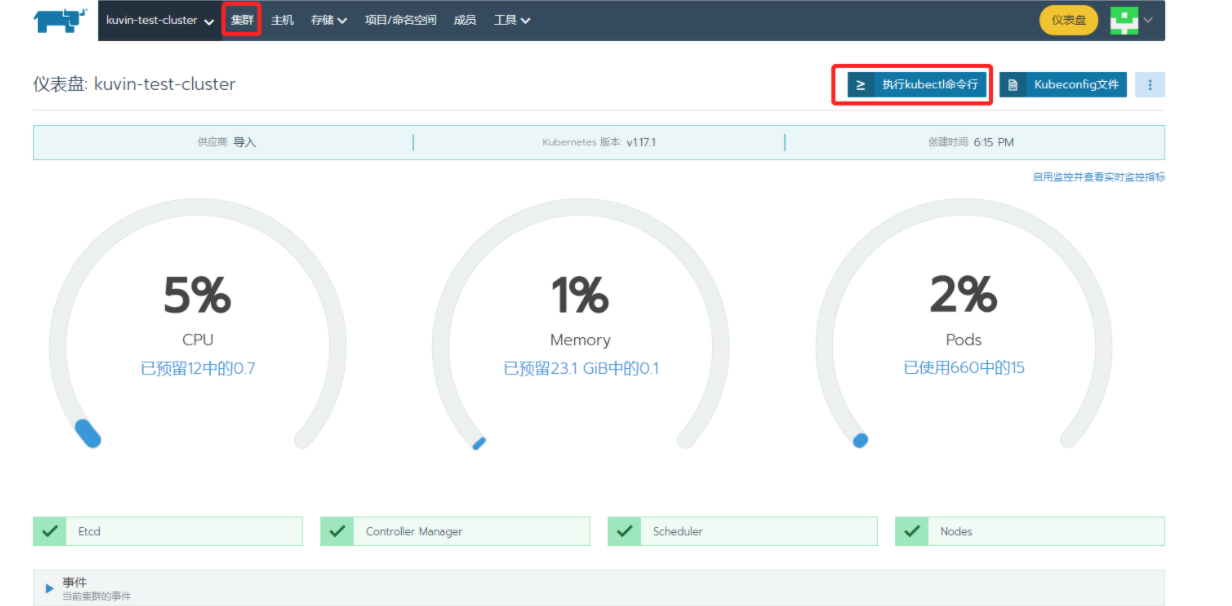
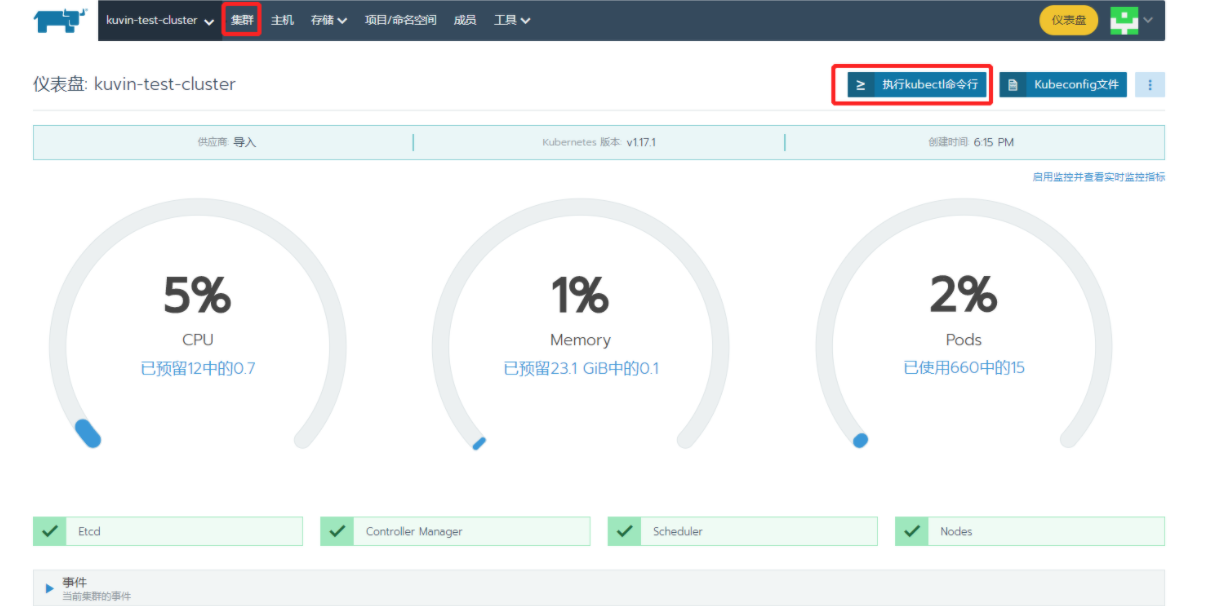
点击上图右上角的"执行kubelet命令行",就可以在webshell里面通过kubelet命令查看集群信息了
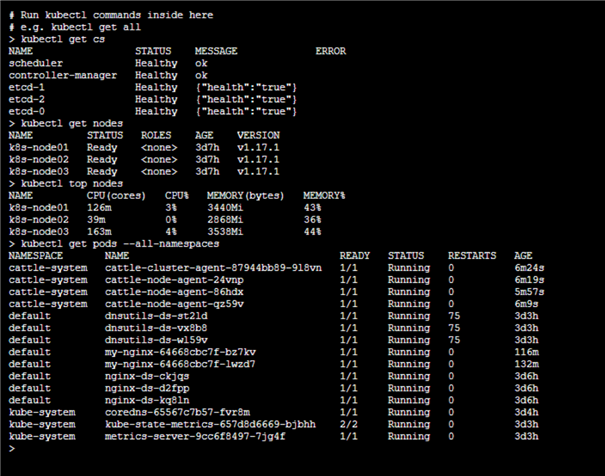
还可以通过查看导入的k8s集群的项目里的资源,来查看每个service下的pod情况


动态伸缩pod副本
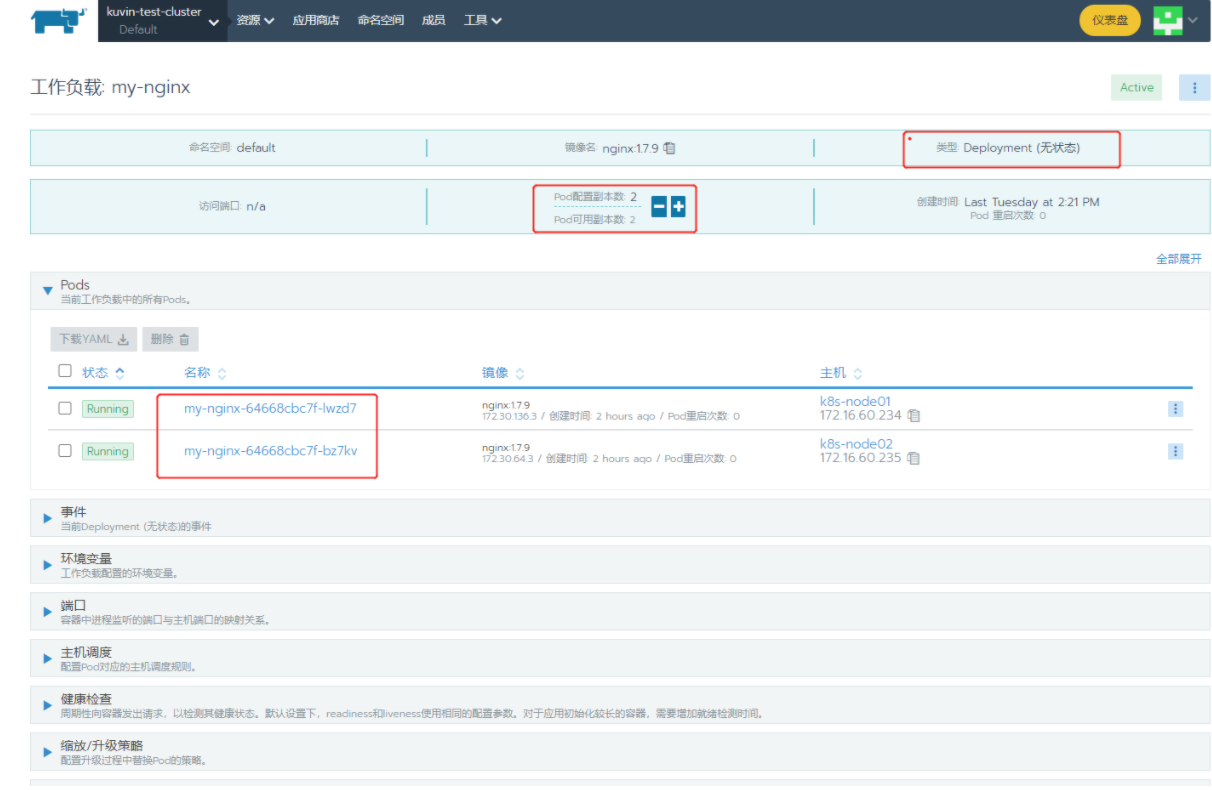
登录pod容器内部
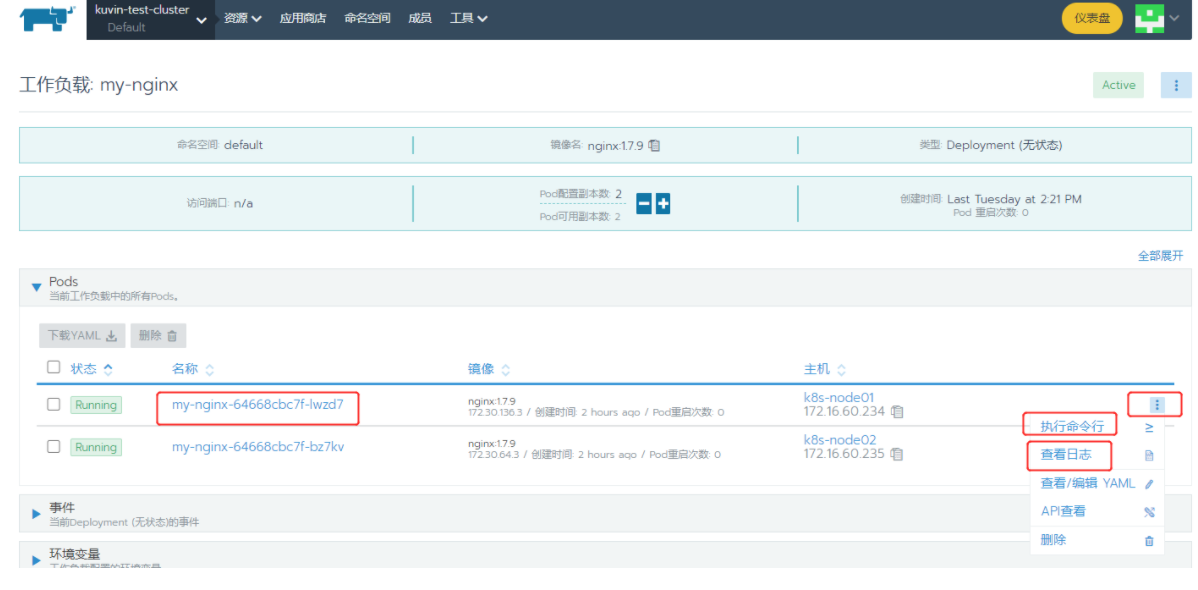

pod重新部署



Rancher还有很多管理k8s集群的其他操作功能,在这里就不一一介绍了。

2)删除已经导入的 "API&Keys" 信息

3)删除上面截图中第一步骤中添加的权限(在k8s集群的master节点操作)
[root@k8s-master01 work]# kubectl delete clusterrolebinding cluster-admin-binding
[root@k8s-master01 work]# kubectl delete deployment cattle-cluster-agent -n cattle-system [root@k8s-master01 work]# kubectl delete daemonset cattle-node-agent -n cattle-system
或者将上面截图中第三步骤的yaml文件地址里的内容粘贴到k8s的master节点的一个yaml文件,比如rancher_imoprt.yml,直接针对这个yml文件执行"kubectl delete -f rancher_imoprt.yml"操作即可删除
[root@k8s-master01 work]# kubectl delete -f rancher_imoprt.yml
原文:https://www.cnblogs.com/kevingrace/p/14617757.html